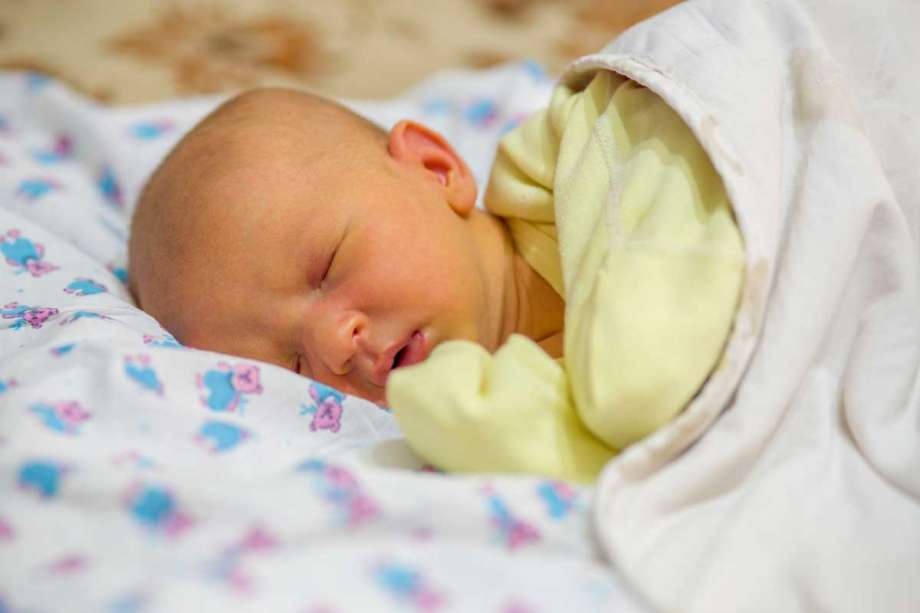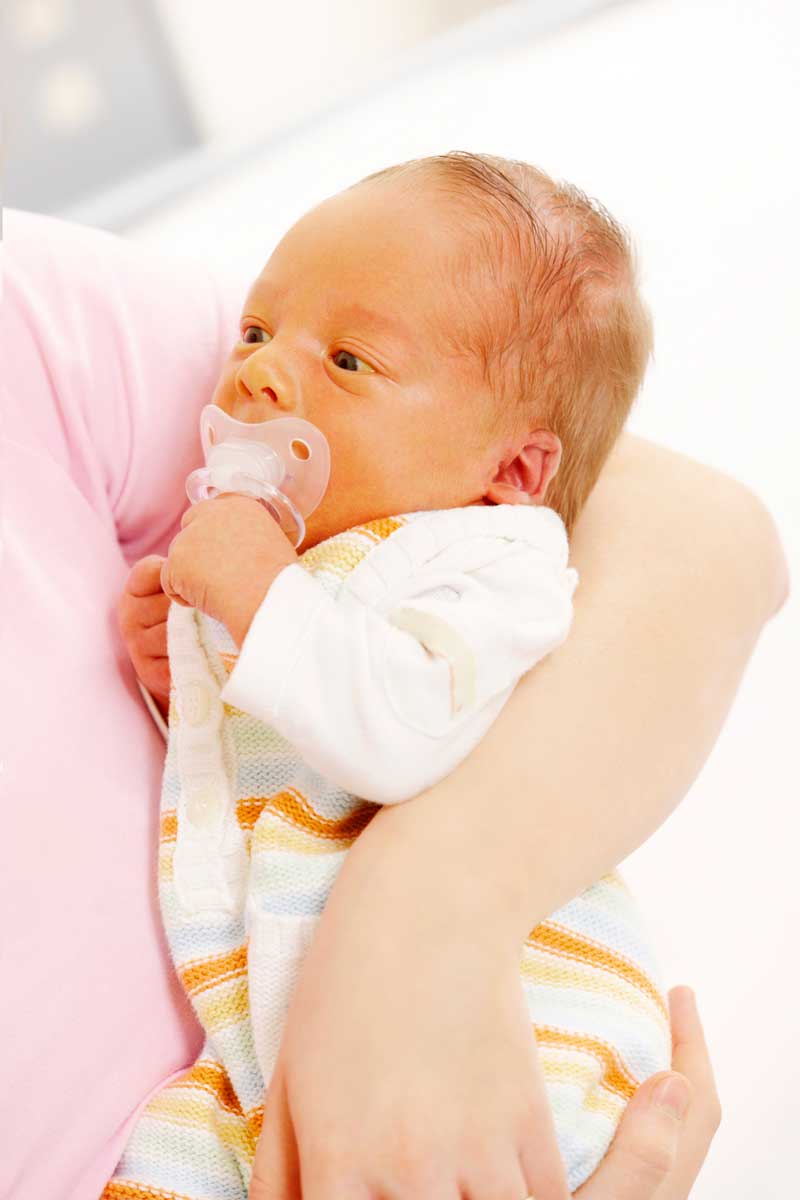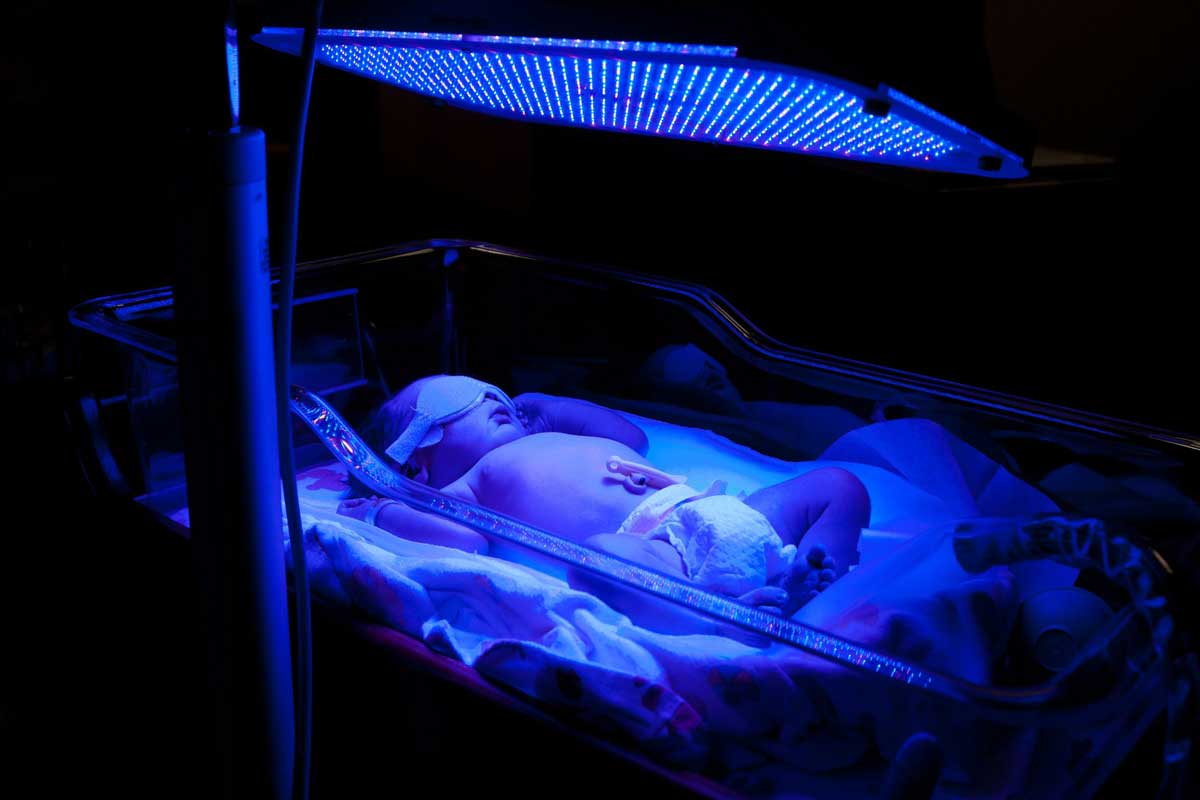Jaundice in Newborns

The most common difficulty in newborns is jaundice (yellow-looking skin), and in most cases it will disappear in two weeks or less without any special treatment. For most full-term babies, jaundice should not last longer than one week.
What Causes Jaundice in Newborns?
Jaundice occurs when excess bilirubin is released into the baby's circulation, caused by the destruction of circulating red blood cells. Jaundice may be attributed to physiological causes (immaturity of the baby's liver), prematurity, breast milk (occurring in one to two percent of breastfed babies), blood group incompatibility (Rh or ABO problems), or hepatitis (rare).
More: Your Baby's First Medical Checkup
A small percentage of babies who are breast-fed can develop breast milk jaundice. The cause of this is not entirely clear, but it's thought to be related to the composition of the mother's milk. It's normal for breast-fed babies to have higher bilirubin levels than formula-fed babies; however, the mother should continue to breast-feed.
Symptoms of Jaundice in Newborns
Jaundice usually begins around the second to third day of life. The baby's face will appear yellow first and then the color will spread to its chest and legs. The whites of the eyes can also be yellow.

To test for jaundice, press your fingertip on the tip of your child's nose or forehead. If the skin shows white (works for all races), then there is no jaundice. If the skin is yellow or slightly yellow, contact your pediatrician immediately. Because many babies are released from the hospital before the baby develops jaundice, it is up to the parents to spot it. Remember: jaundice can be dangerous to the baby, possibly causing deafness, cerebral palsy, brain damage, or even indicating the presence of hepatitis.
More: Worrying About Birth Defects
If a doctor suspects your baby has jaundice, he will need to run a blood test or use a bilirubinometer to measure the levels of bilirubin in the blood. A blood test is typically only used if the jaundice developed within 24 hours of birth. The results will determine whether your baby has jaundice and whether treatment is needed.
How to Treat Jaundice in Newborns
If a doctor does a blood test and decides to treat the baby, the baby will be placed under special lights (also known as phototherapy). If jaundice is prolonged or associated with other metabolic abnormalities, additional measures may be necessary.

Other Screening Tests for Newborns
Each newborn baby gets its heel pricked for a blood test, but the specific tests that blood gets screened for depends on the state where you live.
There are several rare conditions that can be picked up in a screening and save lives (for example, some genetic diseases and immune disorders). Find out what your state screens for and make the decision yourself whether or not you want to pay for additional screening if it's not offered. Usually, you can order a test from a private laboratory that may be fairly inexpensive (it may cost as little as an extra $25), and that test can give you peace of mind if it is negative, or save a life if it is positive.
For more tips and information on your baby's health, follow us on Pinterest: